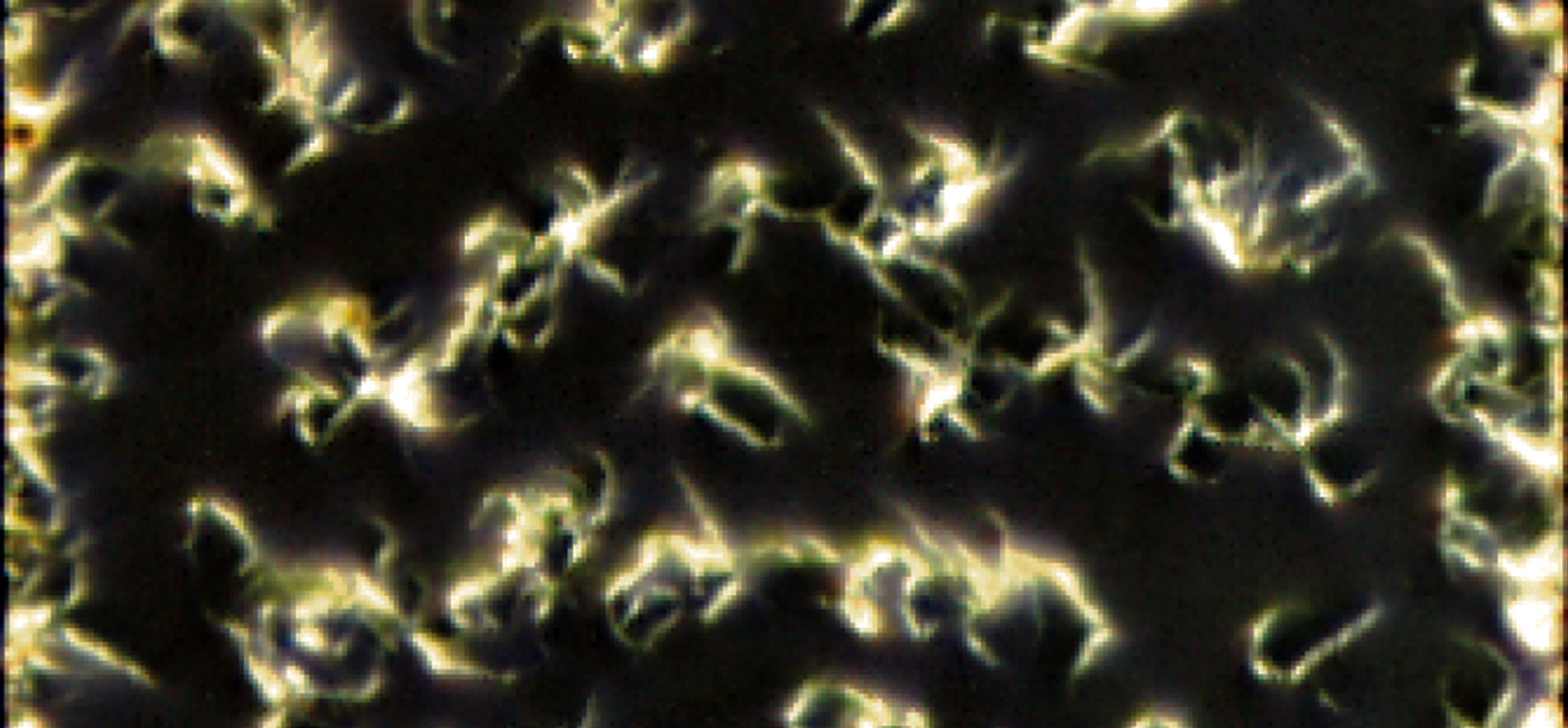
Liquid crystals can help scientists see and study protein aggregates linked to neurodegenerative diseases. (Courtesy Advanced Functional Materials, Sadati, et al.)
A selection of recent faculty research news.
Data-driven decisions
The Research Opportunity Index (ROI), a computational model developed by University scientists, could help better allocate US biomedical research resources. Described in the August issue of Nature Biotechnology, the data-driven model looks for discrepancies between human and financial resources dedicated to a disease and its relative burden on society as measured by frequency of diagnosis and insurance and other costs.
The ROI helps identify diseases like Hashimoto’s thyroiditis, the most common cause of hypothyroidism, that have the most investment potential. “Resources are finite and attention to each problem ideally should be proportional to the need,” said senior study author Andrey Rzhetsky, professor in genetic medicine and senior fellow at the Institute for Genomics and Systems Biology. Associate professor of sociology James A. Evans, director of the University’s Knowledge Lab, also collaborated on the study.
Dusty planets
Those dust clumps in your bedroom have something in common with newly forming planets. UChicago researchers used such dust-sized particles to observe zero-gravity particle collisions in order to simulate events such as the formation of new planets. The study, led by graduate student Victor Lee, AM’15, along with Scott Waitukaitis, PhD’13; Marc Miskin, PhD’14; and Heinrich Jaeger, the William J. Friedman and Alicia Townsend Professor in Physics, found that the electrical charges of these particles cause them to form orbital patterns around each other.
Bonds are formed as more particles pass nearby, causing them to accumulate into larger masses. Such formations had been previously hypothesized, but by using a high-speed camera to record the particles in a vacuum chamber, the research team was able to observe them for the first time. Their findings were published in the August Nature Physics.
Crystal-clear vision
The liquid crystals used to make computer displays and TVs may be able to help in the early detection of type 2 diabetes and neurodegenerative diseases like Alzheimer’s. The protein aggregates associated with the diseases’ development are too small to be seen with a microscope, but researchers from the Institute for Molecular Engineering and colleagues from the University of Wisconsin used a film of liquid crystal molecules to make an amplified imprint of the proteins that could then be studied.
Their work, which was published online September 9 by the journal Advanced Functional Materials, could lead to less elaborate and costly early-detection tests for patients and new ways to study the long-term effects of treatments, said research group leader Juan de Pablo, the Liew Family Professor in Molecular Engineering.
Gut reaction
The composition of gut microbiomes, or the communities of mutually beneficial bacteria that live in the gastrointestinal tract, may influence the development of food allergies in children, according to research published September 22 in the ISME Journal.
University of Chicago researchers, led by Bunning Food Allergy Professor Cathryn Nagler, working with researchers from the University of Naples in Italy, found that the gut microbiomes of infants without a milk allergy and those whose intolerance had been treated with a probiotic formula contained higher levels of certain bacteria that help maintain homeostasis in the digestive system. Identifying the bacteria that could prevent or treat food allergies is “a fundamental advance,” said coauthor Jack Gilbert, associate professor in the Department of Ecology and Evolution. “Translating these findings into clinical treatments is our next goal.”
